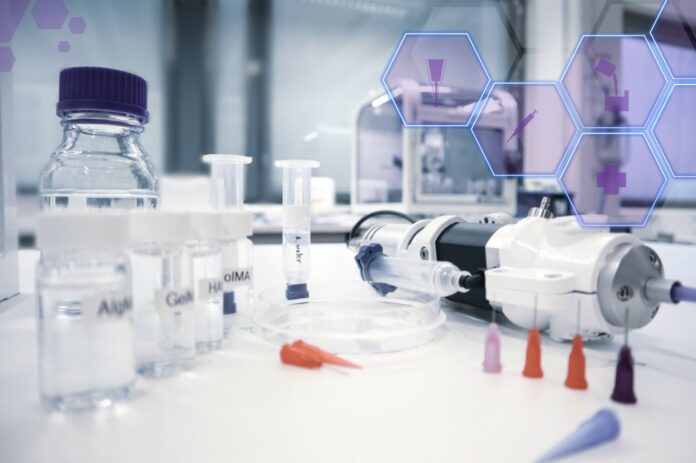The upgraded Pneuma Triaxial Pro “Digital Pneuma Pro” bioprinting head
Finnish 3D bioprinting scaleup Brinter has launched a new printhead for its 3D bioprinters. Named Digital Pneuma Pro, the print head has been designed for academics and pharmaceuticals who are looking to test and develop more personalized treatments for intricate tissue engineering and cell therapy, such as repairing damaged tissue, replacing lost biological functions, and localized therapeutic solutions for the treatment of disease. Overall, the technology enables more precise healing effects with fewer side effects for patients, Brinter says.
According to CEO Tomi Kalpio who recently took part in a “Q&A” series, the key to bringing this new series was the accumulated experiences of their team members utilizing their proprietary hardware architecture, software and fluidic automation system knowledge to make complex fluidic circuits, which have near-zero dead volumes to save resources and to avoid cross-contamination with other materials.

The new Digital Pneuma Pro print head can recreate the precise architecture of living human cells using multiple materials and dispense a combination of various materials in the same print job using microfluidic manipulation. Due to the device’s modularity, it is possible to make modifications to the hardware to accommodate the combinations needed, such as temperature control or imaging options. Without this modular approach, new devices would need to be bought for every function like granulate, paste extrusion, fluidic manipulation or liquid dispensing.
Brinter’s flagship model Brinter One is a modular bioprinter that is able to print multi-material and highly complex tissue structures in 3D, providing all the basic features needed for bioprinting.
The device can print both stiff and soft materials, including but not limited to liquids and hydrogels with living cells, bio-paste, metal with a binder material, and plastic, while being easy to pack up and set up in a different lab or cleanroom in minutes.
Previously, expensive hardware, steep software learning curves and limitations, and process control have limited the efficiency of research for bioprinted cell therapeutics.
“We are bridging the gap between micro/nano/pico/femto fluidic environments and the bioprinting environment, which gives users the precision to control the material which is being manipulated for various use cases – from generating gradience to programming the cells in the droplets to make personalized drugs or functional materials to target cancer or heal/regenerate the tissues,” concludes Kalpio.
Remember, you can post job opportunities in the AM Industry on 3D ADEPT Media free of charge or look for a job via our job board. Make sure to follow us on our social networks and subscribe to our weekly newsletter : Facebook, Twitter, LinkedIn & Instagram ! If you want to be featured in the next issue of our digital magazine or if you hear a story that needs to be heard, make sure you send it to contact@3dadept.com


